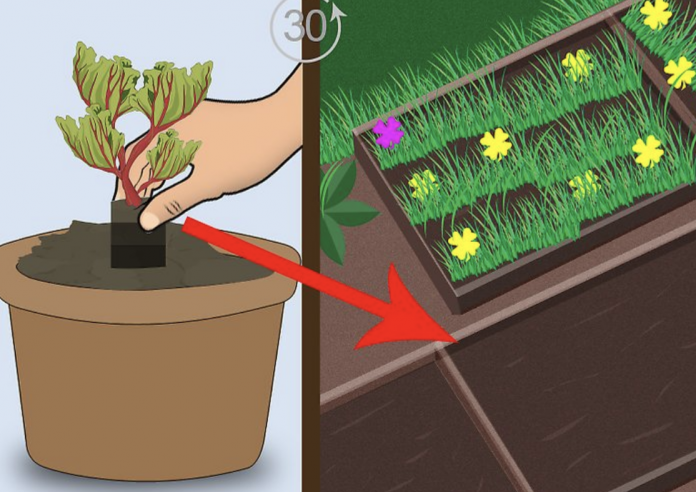Rhubarb is a vegetable perennial plant that is similar to celery stalks wise. Rhubard is mainly combined with fruits for desserts, and you can eat the plant raw as well, but even though the stalks are safe for consumption, the large leaves to the top of the stem are very dangerous and should not be consumed because they contain a high concentration of oxalic acid that should not be absorbed through the skin, ingested, or even inhaled.
If you want to plant rhubarb, you should know that it will take you at least 2 years before harvesting anything, but I am sure that it is worth all of the wait. So, here are the 9 essential steps to properly grow rhubarb.
1- Light Requirements
Make sure to plant the rhubarb’s seeds in a place where it can be exposed to sunlight 6 to 8 hours a day and during the summer, move the plant to somewhere with shade especially in the afternoons.
2- Soil
Rhubarb is a heavy eater in human standards, that is why you should make sure that the garden’s soil is full of compost and other amendments that are high in organic matter. Also, make sure that your soil has a pH level that’s between 6 and 7.
3- Transplanting
Make sure to plant rhubarb in late fall right after they’ve become dormant and make sure to separate the plants 4 feet apart and 2 inches under the soil line.
4- Watering
Rhubarb loves moisture, that is why you should water the plant frequently and mulch around the plants with a straw to retain moisture.
5- Fertilizer
Luckily, rhubarb doesn’t require any fertilization during its first year of growth, but you should enrich the soil with organic matter and make sure to apply high nitrogen fertilizer in early spring.
6- Companion Plants
Did you know that rhubarb grows well next to horseradish, asparagus, and strawberries? If you didn’t know before, you do now. Pair rhubarb with the previously mentioned plants to enrich your garden and to ensure proper rhubarb growth.
7-Forcing Rhubarb
If you want sweet and tender stalks, you can limit the photosynthesis that encourages fast growth gives pale petioles using the rhubarb forcing technique. Forcing rhubarb that has been established for at least 3 years is quite easy, simply cover it with a terra cotta pot or a bucket (make sure to cover every possible light entryway). Don’t force a rhubarb plant two years straight to let it grow naturally in the next years.
8- Harvest
Make sure to remove seed stalks as soon as they start growing when the rhubarb plant is growing and avoid harvesting rhubarb in its first year because the roots are not yet established. When the stems are at least 12 inches long, snip the stalks at the base of the plant and don’t forget to discard the leaves. Also, make sure to leave at least 2 stalks at every plant to avoid killing its productivity.
9- Storage
Storing rhubarb is quite easy and doesn’t require any form of skill set or knowledge. Simply, cut the stalks into 1-inch pieces and store them in your freezer inside a container and that is it.










